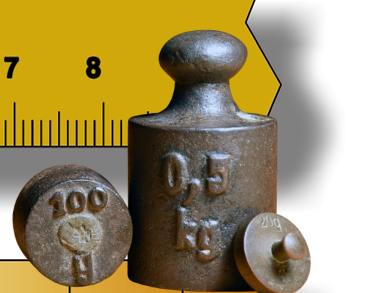The General Conference on Weights and Measures (Conférence Générale des Poids et Mesures, CGPM) has approved a resolution to revise the definitions of the International System of Units (SI). SI units define the second, the meter, the kilogram, the ampere, the kelvin, the mole, and the candela. These are the so-called SI base units. Originally, measurement units were defined by physical objects or properties of materials. These, however, can change over time or in different environments and are no longer accurate enough for today’s research and technological applications.
Following the redefinition of three SI units, today a resolution was signed that the remaining four of the seven base SI units will be redefined in terms of the values of physical constants. This means that from May 20, 2019, the values of all constants will be fixed forever at their values at the time of redefinition. Any laboratory in the world at any time can measure them as precisely as the accuracy of their equipment allows. The revision also marks the end of the link between the SI and physical artefacts (the international prototypes).
The Second, Candela, and Meter
In 1967, the second was redefined. Originally the unit of time was based on the rotation of the Earth about its axis. Today, the second is defined by the transition frequency of the cesium-133 atom. Microwaves of a certain frequency make electrons jump between two particular energy levels, the hyperfine ground states of cesium. Just like the regular oscillations of quartz crystals are used to calibrate electronic watches, the microwave pulses are used to measure out a second of time.
In 1979, the candela was redefined. Originally, the unit of luminosity was based on the brightness of a candle flame. Today, the candela is based on the brightness of a source emitting monochromatic radiation at a specific frequency in the green part of the spectrum, to which the human eye is most sensitive, and that has a radiant intensity in that direction of 1/683 watt per steradian.
In 1983, the meter was redefined. Originally, the unit of length was defined as one ten-millionth of the distance from the equator to the North Pole and was based on the international prototype of a platinum-iridium bar measured at the melting point of ice. Today, the meter is “the length of the path traveled by light in vacuum (299,792,458 meters per second) during a time interval of 1/299,792,458 of a second”.
The Kilogram, Ampere, Kelvin, and Mole
Kilogram
The kilogram is the unit of mass. It was equal to the mass of the The International Prototype of the Kilogram (IPK), which is a block made of platinum-iridium and kept at the International Bureau of Weights and Measures (BIPM), Sèvres, France, under the specific conditions. It was also called Le Grand K.
The new definition of the kilogram is based on the Planck constant, h. The Planck constant of a known reference mass is used to calibrate so-called Kibble balances. The Kibble balance—formerly known as the Watt balance, but renamed in 2016 after its inventor, Bryan Kibble, National Physical Laboratory (NPL), Teddington, UK—measures a mass by looking at the amount of energy it takes to balance its weight using electromagnetic forces.
The kilogram is “defined by taking the fixed numerical value of the Planck constant h to be 6.62607015×10−34 when expressed in the unit J⋅s, which is equal to kg⋅m2s−1, where the meter and the second are defined in terms of c and ΔνCs“.
The IPK will remain in a safe at the BIPM under the same conditions as a historic artefact. It has been under study for 140 years.
Ampere
The ampere is the unit of current. It was defined as the “constant current which, if maintained in two straight parallel conductors of infinite length, of negligible circular cross-section, and placed 1 m apart in vacuum, would produce between these conductors a force equal to 2·10–7 newton per meter of length”.
The new definition of the ampere is based on the elementary charge, e. The ampere “is defined by taking the fixed numerical value of the elementary charge e to be 1.602176634·10−19 when expressed in the unit C, which is equal to A⋅s, where the second is defined in terms of ΔνCs“.
Kelvin
The kelvin is the unit of thermodynamic temperature. It was defined as “the fraction 1/273.16 of the thermodynamic temperature of the triple point of water”. The new definition of the kelvin is based on the Boltzmann constant, k. The kelvin “is defined by taking the fixed numerical value of the Boltzmann constant k to be 1.380649×10−23 when expressed in the unit J⋅K−1, which is equal to kg⋅m2s−2K−1, where the kilogram, meter, and second are defined in terms of h, c, and ΔνCs.
Mole
The mole is the unit of the amount of a chemical substance. It was defined as “the amount of substance of a system which contains as many elementary entities as there are atoms in 0.012 kilograms of carbon 12”. The new definition of the mole is based on the Avogadro constant N.
“One mole contains exactly 6.02214076·1023 elementary entities. This number is the fixed numerical value of the Avogadro constant, N, when expressed in the unit mol−1. The amount of substance, n, of a system is a measure of the number of specified elementary entities. An elementary entity may be an atom, a molecule, an ion, an electron, any other particle or specified group of particles.”
The values of the units of mass (kilogram), current (ampere), temperature (kelvin), and the amount of a chemical substance (mole) will be fixed on May 20, 2019.
- International Bureau of Weights and Measures (BIPM), Sèvres, France




